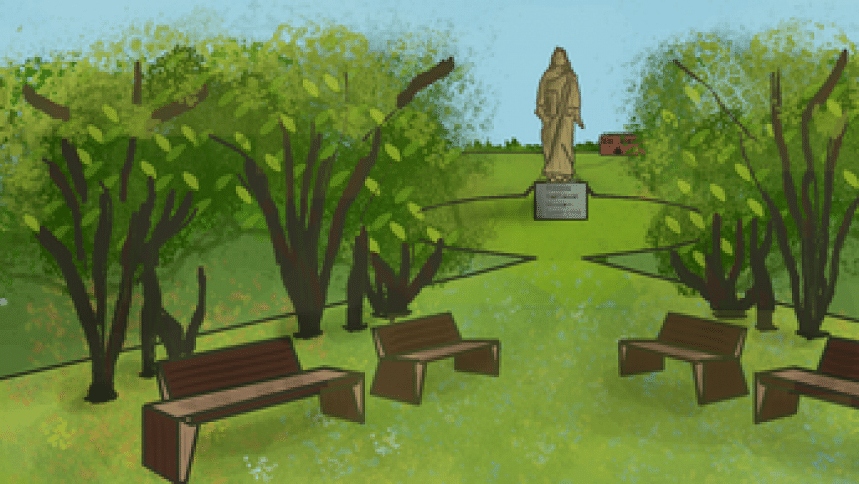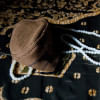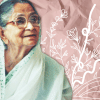‘Luminaries of the Word’: Student designs video game on Bangladeshi women writers

Samiha Binte Nayeem, an undergraduate student, has designed a game for her degree at Canadian University of Bangladesh, highlighting notable women personalities from Bangla literature. Her objective for the project was to familiarise a larger mass of students who may not know much about Bangladeshi activists, humanitarians, and writers as much as they know about their Western counterparts.
In this interview, we talk to Samiha Binte Nayeem and get to know about her motivations, aspirations, and interests surrounding her game, 'Luminaries of the Word'.
DS: You have focused your game on literary personalities like Rokeya Sakhawat Hossain, Kamini Roy, Sufia Kamal, and Romena Afaz. Was there any reason you focused on women in particular? What aspects of their work have you highlighted?
Samiha: Except for Romena Afaz, everyone on this list is fairly well known, and I did not want to feature too many obscure names that may not be familiar to some players. Besides, I didn't have any Bengali female role models growing up, so for my first game, I wanted to highlight the lives of these authors. In that vein, for my next game I'll focus on an all-male list of literary personalities. This game discusses books, stories and poems written by these amazing women.
DS: How are you curating the literature to fit your gaming content?
Samiha: My game revolves around the protagonist working on an article featuring Begum Rokeya and one other writer from the list, depending on the player's choice. Visual novels—that is the genre of my game—are usually text-heavy games with illustrated characters and backgrounds. So creating the game involved, on my part, writing the dialogue (based on the literature) and adding choices the game presents. As a player will see, the literature constitutes a big part of the text and images (containing the Bangla excerpts) shown during the game.
For example, I read Aborodh Bashini and added dialogues based on what it discusses. It contains forty-seven stories on women and their confinement because of purdah. The game presents three (of the 47) stories to the player, and he/ she can pick one to read. The player can also backtrack and read the remaining two, but that is not necessary to advance the game.
DS: You also translated the texts while making the game. How did you engage with the texts during this process?
Samiha: I selected excerpts from eight famous works, books like Begum Rokeya's Motichur and Ekattorer Diary by Sufia Kamal, and expanded on their implied or intended meaning as best as I could, with some help from Mrs Sharmin Afroz. Mrs Afroz graduated with a master's degree in English from Rajshahi University, so she was a big help. The stories and poems I picked were quite straightforward in meaning, which took out a lot of the guesswork for me, but since my intention was to make the game accessible for English speaking audiences, I chose to translate the poems and stories into English. However, sometimes that meant the lines didn't match or the meanings didn't come through as well. Whenever I couldn't rhyme something, I paraphrased it or straight up translated it. So, I didn't really exclude anything or miss the gist of any line.
DS: Who is your target audience and how are you promoting the game?
Samiha: My main objective was to reach students who knew little to nothing about Bengali writers. But the game is for anyone who wants to learn about the works and struggles of these writers and also learn a bit about a few male writers. For instance, the game contains scenes where players can hover over a certain character to learn about them. Using this mechanic, I also added "books" of, say, Tagore. When a player hovers over such a book, he/she can learn a few snippets of information about him.
Another purpose of the game was to inform the players and pique curiosity about other writers and Bengali figures. I had worked on creating this game as a part of my undergraduate thesis, but I didn't have the time to advertise it as I had to meet a deadline. However, eventually, I targeted Facebook and Reddit as I could get a lot of views relatively faster on those platforms.
DS: How did you design the game?
Samiha: In the game, players make specific choices to unlock different endings. They have to read dialogues between the player and the non-player characters (NPC) to decide between these choices. Although players can always consult a route map to pick and go towards a specific direction, the dialogues aid players with clues that open up a specific part of a route focused on one work by one writer. There is one common route that discusses Begum Rokeya, which every player has to read through.
DS: How did you come up with the idea for this game?
Samiha: The idea came to me when, after playing a few visual novels featuring Japanese historical figures like Oda Nobunaga and Tokugawa Ieyasu, I realised how little I knew about our Bengali historical figures. I barely knew about Begum Rokeya, but remember learning a lot about Mother Teresa, Florence Nightingale, and Napoleon Bonaparte as part of my English medium schooling. I wanted to do something to fill this gap. Eventually, I realised that approaching this problem by making a visual novel, that is, a game, made sense from an educational standpoint, as these games can contain a lot of informative text, and additionally, provide fun and interactive ways to learn.
'Luminaries of the Word' is available on itch.io: https://arc7727.itch.io/luminaries-of-the-word.

 For all latest news, follow The Daily Star's Google News channel.
For all latest news, follow The Daily Star's Google News channel. 








Comments